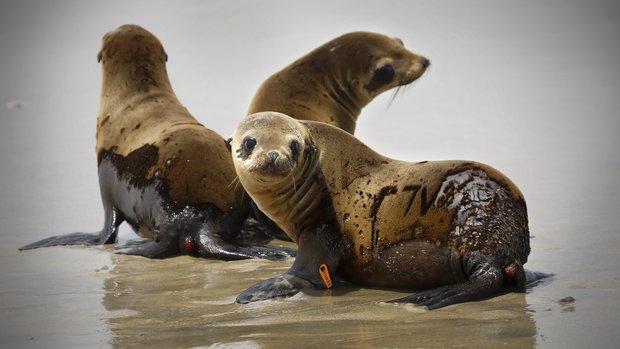
SeaWorld, a prime intake facility for these pups, has between 70 and 80 sea lions in its care these days. That's down from nearly 200 at the height of the crisis in March, spokesman Dave Koontz said. The marine-themed park's rehabilitation center is taking in about three to five pups per week, he said, down from more than 10 per day at the peak.
Since January, SeaWorld has rescued about 340 stranded pups, Koontz said. Most of these emaciated and dehydrated animals are found right at the coast, but a few have reached places such as a hotel, a resident's garage and the middle of a busy road.
In March, the National Oceanic and Atmospheric Administration declared a "marine mammal unusual mortality event" for California, in response to stranding rates that were nearly three times higher than the historical average.
"The number of admits to rehab in recent weeks has definitely been much less than it was at the height of the event in March," said Sarah Wilken, marine mammal stranding coordinator for the agency. "But there are still a lot of animals in the centers that are in need of care."
At SeaWorld, stranded sea lions receive hydration and nutritional treatment, along with medical care, before being released back to the wild after a few weeks or months. About 10 percent to 15 percent of the pups treated at the park's rehab center this year have become stranded again and required a second rescue, Koontz said.
"Some of them just need a little bit more help," he said.
Scientists believe that population changes among squid and small fish - primary sources of food for sea lions - may have triggered the strandings as newly weaned pups struggled to find scarce prey. They're analyzing data about food supplies and certain diseases in their quest to pinpoint the leading cause of this year's unusual toll.
"There are some early indications, but the answers are going to be better in July, after this year's pups are born," Wilken said. "For the moment, everyone's grateful for the breather. But we're not yet saying that it's over."



Reader Comments
to our Newsletter